
Directions
-
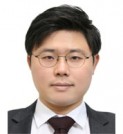
이종민 박사 원광대학교 조교수 임용
전산학부 졸업생 이종민 박사(지도교수 김순태)가 원광대학교 컴퓨터·소프트웨어공학과의 조교수로 임용되었다. 이종민 박사는 졸업 후 삼성전자에서 3년 간 책임 연구원으로 근무하였다. 이종민 박사는 학위 과정 중에는 저전력 컴퓨터 아키텍처를 연구하였으며, 졸업 후 삼성전자에서는 DRAM 설계 및 테스트에 관련한 도구 개발을 수행하였다. 임용을 다시한번 축하드립니다.
...Read more -
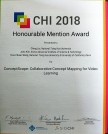
김주호 교수 연구팀, ACM CHI 2018 학회 Honorable Mention Awar..
KAIST 전산학부 김주호 교수 연구팀이 지난 4월 21~26일에 캐나다 몬트리올에서 열린ACM CHI Conference on Human Factors in Computing Systems (CHI 2018) 국제학회에서Honorable Mention Award를 수상하였다. CHI 학회는 Human-Computer Interaction 분야의 최고 권위 학회로, Honorable Mention Award는 전체 논문 중 상위 5%의 논문에 주어지는 상이다. 본 연구는 국제 협력의 결과로, 대만 National Tsing Hua University 석사과정이자 KAIST 전산학부 교환학생 Ching Liu 학생, UC Davis의 Hao-Chuan Wang 교수가 함께 하였다. 논문 제목: ‘ConceptScape: Collaborative Concept Mapping for Video Learning’ 본 논문에서는 온라인 교육 환경에서 강의 영상을 시청하는 학습자들이 협력하여 컨셉트 맵을 만들 수 있도록 돕는 시스템을 소개하였다. 이렇게 생성된 컨셉트 맵을 통해 학습자들이 강의의 내용을 보다 쉽게 탐색하고 이해할 수 있음을 보였다. 논문 링크: https://dl.acm.org/citation.cfm?id=3173961 논문 관련 정보: https://kixlab.org/publications/
...Read more -

김덕수 박사 한국기술교육대 (KOREATEC) 조교수로 임용
우리 전산학부 출신 김덕수 박사(2010학번 지도교수: 윤성의)가 올 해 한국기술교육대 (KOREATEC) 에 조교수로 임용되었습니다. 김덕수 박사는 윤성의 교수 연구실에서 CPU 및 GPU 모두를 활용하는 이종병렬기술을 연구하였고, 졸업후 KISTI에 연구원으로 재직하던 중에 학계로 자리를 옮기게 되었습니다. 조교수 임용을 축하드립니다. https://sglab.kaist.ac.kr/bluekds/
...Read more -

KAIST 전산학부 김문주 교수 연구실 ICST 2018에서 우수논문상 수상
KAIST 전산학부 김문주 교수 연구실에서 발표한 "Invasive Software Testing: Mutating a Target Program to Diversify Test Exploration for High Test Coverage" 논문이 CORE Rank A급 우수학회인 IEEE International Conference on Software Testing, Verification and Validation (ICST) 2018 (acceptance rate:25%) 에서 Distinguished Paper Award 를 수상했습니다. 해당 논문은, 기존의 SW 테스팅 패러다임을 뛰어넘는 새로운 기술인 Invasive Software Testing을 제안한 논문이다. Invasive Software Testing은 대상 SW 프로그램을 변형한 수많은 변이체들로부터 다양한 정보를 추출하여, 기존의 SW 테스팅이 분석하지 못하는 영역의 오류를 효과적으로 검출한다. 본 논문은 Invasive Software Testing 패러다임을 구현한 DeMiner (guiDEed test generation using MutatIoN ExploRation) 프레임워크를 통해, 최신 테스팅 기술대비 SW 분석 효과가 비약적으로 상승함을 실험적으로 입증하였다. 수상을 축하드립니다.
...Read more -
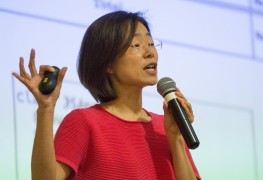
류석영 교수, <Programming> 2018에서 초청강연자로 기조연설
류석영 교수, 2018에서 초청강연자로 기조연설 KAIST 전산학부 류석영 교수가 2018에서 초청강연자로 “Static Analysis of Android Applications for Finding Bugs and Security Vulnerabilities”에 대해 기조연설을 하였습니다. 2018은 The International Conference on the Art, Science, and Engineering of Programming으로, 프로그래밍에 대한 다양한 이론적, 실험적, 공학적 연구 결과를 논의하는 곳입니다. 2018은 4월 9일부터 12일까지 프랑스 니스에서 열렸습니다.
...Read more -
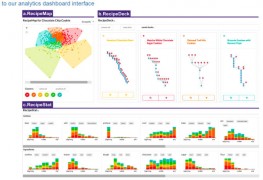
KAIST '순차 지식' 정리해 주는 알고리즘 플랫폼 개발
<왼쪽부터 김주호 KAIST 전산학부 교수, 마니쉬 아그라왈라 스탠포드대 교수, 장민석 박사과정> 전산학부 김주호 교수팀과 마네시 아그라왈라 미국 스탠퍼드대 교수팀, 스위스 로잔공대 연구팀과 함께 각종 순차 지식을 정리하고 분석하는 플랫폼에 관한 기사입니다. http://www.etnews.com/20180409000376 본 연구는 오는 4월 26일 HCI 최고권위 분야 학회인 ACM SIGCHI 2018에 발표될 예정입니다. 프로젝트 웹사이트: https://recipescape.kixlab.org/
...Read more -

KAIST 개발 농식품 유통 관리 플랫폼, 완주로컬푸드 적용
전산학부 김대영 교수의 주도로 개발한 '올리옷(Oliot) 플랫폼'이 국내 최대 규모의 농식품 협동조합인 완주로컬푸드에 적용돼 5일부터 운용에 돌입한다는 기사입니다. http://www.etnews.com/20180403000333 http://www.kaist.ac.kr/_prog/_board/?mode=V&no=79062&code=kaist_news&site_dvs_cd=kr&menu_dvs_cd=0601&list_typ=B&skey=&sval=&smonth=&site_dvs=&GotoPage=1
...Read more -
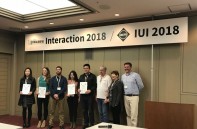
ACM IUI 2018, Best Student Paper Award Honorable M..
KAIST 전산학부 김주호 교수와 University of Michigan 박사과정이자 KAIST 전산학부 방문연구원인 송진영(Jean Y. Song) 학생이 지난 3/8일 일본 도쿄에서 열린 ACM 2018 Conference on Intelligent User Interface (IUI) 국제학회에서 ‘Best Student Paper Award Honorable Mention’ 상을 수상하였다. 논문 제목: ‘Two Tools are Better Than One: Tool Diversity as a Means of Improving Aggregate Crowd Performance’ 본 논문은 기존 크라우드소싱(crowdsourcing) 기법의 한계를 극복하기 위한 방법을 제시한 연구로, 참여자에게 다양한 툴(tool)과 인터페이스를 제공함으로써 단일 툴을 사용했을 때 생길 수 있는 도구의 한계에서 발생하는 오류를 최소화 하여, 총합된 결과물의 정확도를 향상시키는 방법을 제안하였다. 논문 링크: https://dl.acm.org/authorize?N43044
...Read more -
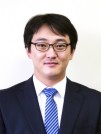
전산학부 졸업생 김재일 박사 경북대 조교수 임용
우리 전산학부 졸업생 김재일 박사(지도교수: 박진아, 2015년 2월 졸업)가 경북대학교 IT대학 컴퓨터학부 조교수로 임용되었다. 김재일 박사는 박사학위 취득 이후 삼성종합기술원 (Samsung Electronics) 에서 Senior Engineer로 근무하였고 2016년 6월부터 University of North Carolina at Chapel Hill 에서 Postdoctoral Research Associate로 활동하며 전산학과 의료영상분야의 연구를 활발히 수행했다. 주요 연구내용 Diffusion-weighted atlas construction & learning-based missing image prediction Ultrasound image fusion 3D foot bone modeling for foot joint analysis Surface-based shape analysis for subcortical structures and brain ventricles 임용을 축하드립니다.
...Read more -
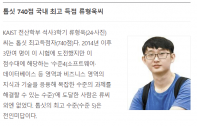
전산학부 석사과정 류형욱 TOPCIT 최고득점
우리 전산학부 석사과정 류형욱씨가 TOPCIT 최고득점자와 관련된 기사입니다. http://news.joins.com/article/22411058
...Read more -

유신 교수, Empirical Software Engineering 저널 편집위원 선임
KAIST 전산학부 유신 교수는 2018년 2월자로 Springer에서 발행하는 Empirical Software Engineering 학술지의 편집위원으로 선임되었다. Springer의 Empirical Software Engineering은 경험적, 실증적 접근 방법의 소프트웨어 공학 연구를 다루는 SCIE 학술지이다. 2016년 기준 IF 3.275, 5년 누적 IF 3.759의 높은 영향력을 자랑하고 있으며, Google Scholar 기준 Software Systems 분야의 학회 및 학술지 순위에서 12위에 랭크되어 있다.
...Read more -

박진아 교수 KAIST 대표 R&D 연구성과 10선 선정
우리 전산학부 박진아 교수가 "점진적 가변형 모델에 기반한 해마 형태학 연구" 란 주제로 2017년 KAIST 대표 R&D 연구성과 10선에 선정되었습니다. KAIST 대표 R&D 연구성과 10선은 - KAIST R&D 우수성과 발굴·홍보를 통한 연구자의 연구의욕 고취 - 지속적인 Annual Report 발간과 동영상 제작을 통한 우수성과 및 핵심기술 정보 축적 - 체계적인 성과사례 관리를 통한 성과관리체계의 발전적 진화 유도 에 그 취지를 두고 있으며, 수상은 2018년 5월 중 Research Day 행사 시 시행됩니다. 수상을 축하드립니다.
...Read more -
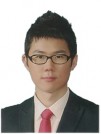
김효수 박사과정, 휴먼테크 논문대상 동상 수상
지난 2월 7일 지난 2월 7일, 삼성전자 휴먼테크논문대상 Computer Science & Engineering 부분에서 KAIST 전산학부 박사과정 학생이 동상을 수상했습니다. 전산학부 박사과정 김효수·조병길 학생 (지도교수 신인식)과 CMU 박사과정 김대혁 학생으로 구성된 연구팀은 모바일 환경에서 touch sound를 활용하여 사용자 touch 위치를 찾는 기술을 개발하여 '동상'을 수상했습니다. 연구팀은 사운드 기반의 새로운 해킹 기법 및 모바일 HCI 기술을 제시한 점에서 높은 평가를 받았습니다. 논문 제목 - TapSnoop: Leveraging Tap Sound to Infer Tapstrokes on Mobile Touch-screen Devices 저자 - 김효수 (KAIST), 김대혁 (CMU), 조병길 (KAIST) 삼성전자 휴먼테크논문상은 미래 과학한국을 이끌어갈 창의적이고 도전적인 젊은이들을 발굴하고 학교 내 연구 분위기 활성화와 기술을 중시하는 사회 분위기 조성을 위해 1994년에 제정된 상 입니다. 수상을 축하드립니다. https://humantech.samsung.com/saitext/board.do
...Read more -
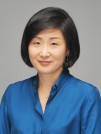
문수복 교수 2018년도 한국공학한림원 일반회원 선정
지난 1월 3일 발표된 2018년도 한국공학한림원(회장 권오경)정회원 관문인 일반회원에 우리 전산학부 문수복 교수가 선정된 기사입니다. 선정을 축하드립니다. 기사보기: http://www.etnews.com/20180103000240
...Read more -

2018년 개교 47주년 기념 우수교원 포상
*사진상(최기선, 한동수, 고인영 교수) 2018년 개교 47주년 기념 우수교원 포상에 우리 전산학부 최기선 교수가 국제협력상 한동수 교수가 이노베이션상 고인영 교수가 우수강의상에 선정되었습니다. 국제협력상은 국제협력 분야에서 실적이 탁월하거나 학교의 국제협력 발전에 크게 공헌한 우수교원, 이노베이션상은 기술이전·사업화를 통하여 관련 산업분야 혁신에 기여하고, KAIST의 우수한 연구 성과물의 공유와 확산에 기여한 교원, 우수강의상은 최근 1년간 강의평가 결과가 탁월한 교원 을 기준으로 선정되었으며 수상식은 오는 2018. 2. 12.(월) 오후 2시, 개교 47주년 기념식 행사에서 진행됩니다. 수상을 축하드립니다.
...Read more -
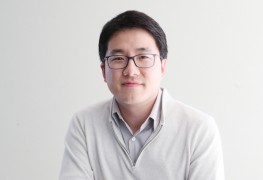
송암(松岩) 미래 석학 우수 연구상 수상
2018년도 송암(松岩) 미래 석학 우수 연구상에 우리 학부 양은호 교수가 선정되었습니다. 송암(松岩) 미래 석학 우수 연구상은 한국호머 이정우 회장의 뜻에 따라, 공과대학 소속 부임 5년 미만의 조교수 중 연구성과가 탁월한 우수 조교수를 선정· 연구활동을 독려하고자 수여하는 상으로 시상식은 제47주년 개교기념식(2018.2.12(월), 14:00) 행사에서 진행됩니다. 수상을 축하드립니다.
...Read more -

박진아 교수 공과대학으로부터 감사패 수여
전산학부 박진아 교수는 2018년 1월 3일에 개최된 공과대학 신년간담회에서 지난 4년간 공과대학 뉴스레터 발간 및 편집위원회 위원장으로써 뉴스레터 KAIST Breakthroughs의 발전에 공헌하였기에 김종환 공대학장으로부터 감사패를 받았다. 수상을 축하드립니다.
...Read more -
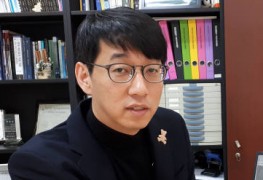
신인식 교수, 스마트폰 전력소모를 절반으로 줄이는 기술 개발
신인식 교수, 스마트폰 전력소모를 절반으로 줄이는 기술 개발 스마트폰 웹 브라우저의 소모 전력을 기존의 40% 수준까지 줄일 수 있는 애플리케이션(앱) 기술이 개발됐다. 스마트폰 전력 소모량의 상당 부분을 차지하는 웹 브라우저 소모량을 줄여 배터리 사용 시간을 대폭 늘릴 수 있을 것으로 기대된다. 신인식 전산학부 교수팀이 웹 페이지 출력 프레임 수를 최적화하는 방법으로 '저전력 모바일 브라우징 기술'을 개발했다고 1월 8일자 전자신문에 밝혔다. 신 교수는 “저전력 모바일 브라우징 기술을 적용하면 소프트웨어(SW)만으로 전체 스마트폰의 전력 성능을 높일 수 있다”면서 “소모 전력 최적화에 나서는 스마트폰 제조사 및 웹 브라우저 앱 개발사에 도움이 될 것”이라고 말했다. 전자신문 기사: http://www.etnews.com/20180105000383
...Read more -

제8회 TOPCIT 정기평가 대상 수상
KAIST 전산학부 석사과정 류형욱 학생(지도교수: 최성희)이 지난 12월 14일 서울에서 열린 제8회 TOPCIT 정기평가 시상식에서 대상(과학기술정보통신부장관상)을 수상했다. 이번 제8회 정기평가에는 ICT 및 SW분야 전공 대학생, 재직자, 군인 등 3,879명이 응시하였으며, 류형욱 학생은 응시자 중 최고 점수를 받았다. TOPCIT은 ICT 산업 종사자 및 SW 개발자가 비즈니스를 이해하고 요구사항에 따른 과제를 해결하여 업무를 성공적으로 수행하는 데 요구되는 기본적인 핵심 지식 · 스킬 · 태도의 종합적인 능력을 진단하고 평가하는 제도이다.
...Read more -
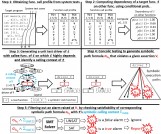
ICSE 2018 논문 채택
소프트웨어 공학 분야 세계 최고 학회인 ACM/IEEE ICSE (Intl. Conf. on Software Engineering)에 우리 전산학부 김문주 교수 연구실의 논문이 채택되었습니다. 본 논문 "Precise Concolic Unit Testing of C Programs with Alarm Filtering Using Symbolic Calling Contexts" 은 전산학부 김문주 교수와 박사후연구원 김윤호 박사가 경북대 최윤자 교수와 같이 작성한 연구논문으로, C 프로그램의 오류를 자동으로 찾으며 거짓 경보를 최소화하는 새로운 유닛 테스트 기술을 연구한 연구논문입니다.
...Read more -
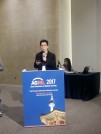
제 9회 머신러닝 아시아 컨퍼런스(ACML) 2017 개최
우리 전산학부 김기응 교수가 General Chair로 참여한 제 9회 머신러닝 아시아 컨퍼런스(ACML) 2017이 11 월 15 일부터 17 일까지 연세대 학교 백양 홀에서 개최하였다. 본 행사에서는 전문가와 연구자들이 머신러닝에 대한 연구 결과와 아이디어를 공유하였으며, 아시아를 넘어 전 세계적으로 머신러닝의 혁신적인 아이디어와 패러다임에 중심을 둔 제안도 함께 논의하였다. ACML은 2009년부터 다양한 산업 분야에서 중요한 역할하고 있는 머신 러닝에 대해 연구자들이 새로운 아이디어와 기술들을 공유해왔다. ACML은 2009 년부터 아시아 지역에서 시작돼 뉴질랜드, 홍콩, 베트남, 호주, 싱가포르, 대만, 일, 중국 등에서 진행됐다. 이 컨퍼런스는 과학자들이 머신러닝에 대한 지식을 폭넓게 이해하며 인사이트를 얻어 기술을 산업에 적용하는 데 기여해왔다.
...Read more -
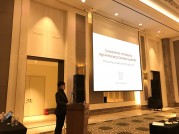
CAN '17 at ACM CoNEXT 2017, Best Paper Award 수상
KAIST 전산학부 학사과정 신재민, 홍덕기(졸), 박사과정 우신애(졸) (지도교수 문수복) 학생이 지난 12/12일 인천 파라다이스 시티 호텔에서 열린 ‘Cloud-Assisted Networking Workshop at ACM CoNEXT 2017’ 국제학회에서 ‘고성능 컨테이너 기반 네트워크 기능 가상화 배치에 관한 고찰(Considerations on Deploying High-Performance Container-based NFV)’에 관한 논문으로 ‘Best Paper Award’를 수상했다. 수상을 축하드립니다.
...Read more -

세계 3대 암호학회 Asiacrypt2020 한국(대전) 개최 예정
김광조 교수는 2017년 12월 3일부터 7일까지 홍콩에서 개최된 Asiacrypt2017 기간 중 12월 4일에 개최된 Asiacrypt 조정위윈회에 참석하여 한국을 대표하여 Asiacrypt2020 의 한국 개최 제안을 발표하고 3:1의 경쟁을 뚫고 한국 개최를 승인 받았다. Asiacrypt 조정위원회는 매년 12월에 개최되는 Asiacrypt 개최국을 공모 및 결정하는 위원회로 현재 아시아와 호주 대륙에서 13개국의 회원국으로 각국별 최대 3명의 대표가 있으며 한국, 일본, 중국, 대만, 홍콩, 인도, 호주, 뉴질란드, 말레이지아, 싱가포르, 베트남, UAE, 파키스탄이 참가하고 있으며 이날 회의에는 파키스탄 대표단은 불참하였다. Asicrypt2020 개최 제안에는 한국, 싱가포르, UAE 3개국이 제안하였으며, 각 참가국별 1표씩하여 12개국의 비밀 투표를 실시한 결과, 한국 6표, 싱가포르 및 UAE는 각각 3표를 획득하였으며, 한국의 지지표가 과반수 표를 얻지 못하였다. 3개 제안 국가를 제외하고 별도 회의를 개최하여 Asiacrypt 조정위원회 의장인 중국 상해교통대학의 Lai 교수가 직권으로 다수표를 획득한 한국 개최를 결정하였다. 내년 4월말 이스라엘에서 개최되는 Eurocrypt 기간 중 IACR(세계암호학회) 이사회에서 추인을 받으면 공식적으로 Asiacrypt2020의 한국 개최가 확정된다. 이로서, Asiacrypt2020은 2020년 12월 6일부터 10일 까지 한국(대전)에서 개최될 예정이며 세계적인 암호 학자들이 대대적으로 한국을 방문할 것이며 한국의 암호학 연구 및 발전에 한단계 상승 효과를 가져올 것으로 예측하며, 카이스트 김 광조 교수는 현재 IACR 석학회원으로 Asiacrypt 2020의 운영 위원장으로 봉사할 예정이다.
...Read more -

김민혁교수, 초소형 초분광 영상기술 소개
KAIST 전산학부 김민혁 교수 연구실에서 개발한 초소형 초분광 영상기술과 관련된 기사가 EurekAlert Science News와 Photonics Media에 소개되었습니다. 본 연구는 수천에서 수억원이상을 호가하는 초분광영상시스템에서만 가능한 초분광 영상기술을 일반 카메라를 이용하여 가능케 한 기술입니다. 김민혁 교수는 기사에서 “인공위성이나 군사용으로만 가능하던 고가의 초분광 영상기술이 일반인들도 쉽게 사용할 수 있도록 하는 중요한 기술적인 초석이 마련되었다”라며 앞으로 초분광 영상기술의 확대 활용에 기대감을 드러냈습니다. 본 연구는 백승환 박사과정(제1저자, 지도교수: 김민혁)과 김인철 석사과정(제2저자, 지도교수: 김민혁) 학생이 사라고자 대학과 공동으로 개발한 연구로서, 세계 최고의 컴퓨터 그래픽스 저널인 ACM Transactions on Graphics(TOG)에 11월 게재되었으며, 또한 이번 ACM SIGGRAPH Asia 2017에서 발표되었습니다. EurekAlert Science News 관련기사: https://www.eurekalert.org/pub_releases/2017-11/afcm-chi120417.php Photonics Media 관련기사: https://www.photonics.com/Article.aspx?AID=62875 Technology Breaking News 관련기사: https://www.technologybreakingnews.com/2017/12/compact-hyperspectral-imaging-at-low-cost/ R&D Magazine 관련기사: https://www.rdmag.com/news/2017/12/compact-hyperspectral-imaging-low-cost
...Read more -

SW중심대학 산학협력프로젝트 우수 경진대회에서 최우수상 (과학기술정보통신부 장관상) 수상
KAIST 전산학부 학부과정 12학번 윤민규(지도교수: 김기응), 11학번 김덕성(전산학부 복수전공, 지도교수: 문건우), 13학번 조경제(지도교수: 맹성현) 학생이 지난 11월 24일 일산 킨텍스 SW 페스티벌에서 SW중심대학 산학협력프로젝트 우수 경진대회 최우수상 (과학기술정보통신부 장관상)을 수상했다. SW 페스티벌은 “모두를 위한 SW 교육”을 주제로 초·중등 SW 교육체험관, SW 중심대학관, 한이음엑스포관 등 총 3개관이 11월 24일, 25일 총 이틀간 운영 되었다. SW 페스티벌에서는 SW 교육 우수성과물 전시, 다양한 SW 교육 체험기회 제공 등 다채로운 행사가 열렸다. 윤민규, 김덕성, 조경제 학생은 전산학 프로젝트(CS408)에서 진행했던 AnyFont 프로젝트 (딥러닝을 이용한 한글폰트 제작 툴)을 주제로 SW 페스티벌에서 SW중심대학 산학협력프로젝트 우수 경진대회에서 최우수상 대상자로 선정되었다. 과학기술정보통신부 유영민 장관 프로젝트 설명 기사: http://news1.kr/photos/details/?2840359
...Read more -
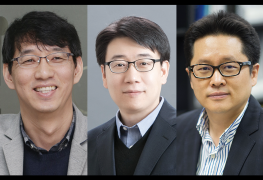
신인식, 허재혁, 김민혁 교수 Microsoft Research Asia 공동 연구 프로그..
신인식, 허재혁, 김민혁 교수 Microsoft Research Asia 공동 연구 프로그램에 선정 Microsoft Research Asia (MSRA) 공동 연구 프로그램은 상호 관심있는 연구 주제를 발굴하고, MSRA 연구원과 함께 연구하는 아시아 대학 교수진을 위한 상호 공동 연구 프로그램입니다. 이 프로그램을 통해 아시아에 재능 있는 인재들을 육성하고 고등 교육을 위한 가치 있는 연구 및 기술 파트너십을 확립하고자 하는 일환으로 Microsoft에서 설립한 공동 연구 프로그램입니다. 특히 KAIST는 Tsinghua, HKUST, USTC등과 같이 동일대학 가장 많은 연구과제가 선정된 기관이기도 합니다. 선정된 3편의 연구 내용은 다음과 같습니다. TouchSurface: Supporting Touch User Interface with Sound on Any Surface Insik Shin, KAIST Securing Key-Value Stores with Hardware Trusted Execution Environments Jaehyuk Huh, KAIST Capturing Intrinsic Material Appearance via Spectro-Polarimetric 3D Imaging Min H. Kim, KAIST 7 월 중순에 제안 요청을 발표한 이후, MSRA Collaborative Research Program Committee에서 최첨단 및 공통 연구 관심 분야를 기반으로 신중하게 검토하였으며, 이중 총 62 개의 제안서를 선정하였습니다. 중국 본토, 홍콩, 대만, 일본, 한국 및 싱가포르 등의 35 개 대학교에서 선정되었으며, 저희 KAIST에서는 저희 전산학부에서만 신인식, 허재혁, 김민혁 교수님 세분이 선정되었습니다. 축하드립니다! [관련정보] http://www.microsoft.com/en-us/research/lab/microsoft-research-asia/articles/msra-collaborative-research-2018-award-announcement/
...Read more -

전산학부 정보보호대학원 장대희학생팀 사이버공격방어대회 2017에서 논문공모전 대상 및 해킹..
KAIST 정보보호대학원 박사과정 장대희 (지도교수 강병훈) 학생이 지난 11월 22일 서울 양재동 더케이호텔에서 열린 CCE 2017 (Cyber Conflict Exercise & Contest) 의 사이버안보논문 공모전시상식에서 “RUMA: Rethinking Byte Granularity Heap Randomization” 제목의 논문으로 대상을 수상했다 CCE 2017 은 국가보안연구소와 국가정보원 및 한국정보보호학회의 주관으로 진행되는 행사로서 (http://www.nisa.or.kr/cce2017/page6.html), 사이버공격방어대회와 논문공모전을 병행한다. 논문공모전의 경우 총상금 3300만원의 규모로 진행되며 서울대, 포항공대, 고려대 등에서 총 117편의 논문이 제출되었는데, 이중 최상위작이 대상으로 선정되며 500만원의 상금이 주어진다. 비록 제출된 논문들 중 1등 이어도 내용이 충분히 우수하지 않으면 대상은 수상하지 않는 규칙이다. 대상논문 외에도 강병훈교수 연구팀에서 2개의 논문 (Various Detection Techniques against System Emulation Environment and its Countermeasures 주저자 장대희, SGX-LEGO: ROP-based Binary Conversion Framework for Side-Channel Attack Mitigation 주저자 김덕진) 이 우수상을 수상하여 총 3개의 논문이 단일 연구실의 논문으로서 입상하여 주목받았다. 또한 정보보호 대학원 교수들이 지도한 논문 Demystifying the Dark Web: Understanding the Underground Online Society 이 최우수상을 받았으며, 신인식 교수의 지도논문 Oblivious execution model design based on ORAM for thwarting memory side channel attacks 이 장려상을 받아서 전체 상금의 많은 부분을 KAIST 가 가져갔다. CCE 행사는 논문공모전 외에도, 실무적인 해킹공격 및 방어기술을 평가하는 사이버공격방어대회를 2박 3일의 일정으로 진행하는데, 이 대회에서도 강병훈교수의 연구팀 (장대희, 김종환, 박민준) 주축으로 구성된 5인팀이 600만원의 상금과 함께 2위를 차지하였다. 강병훈 교수 연구팀은 CCE 행사 바로 전에도, 일본에서 열리는 국제해킹대회 TrendMicro CTF 본선전에 진출해서 8위를 달성하기도 하였다.
...Read more -

제14회 HDCON, 실감나는 침해사고 현장 그대로 재현…우승은 KAIST팀
지난 13일 서울 양재에서 진행된 제14회 HDCON(Hacking Defense CONtest, 해킹방어대회) 에서 우리 전산학부와 정보보호대학원 학생이 참여한 팀이 우승을 차지했습니다. - 한형석: 차상길교수 석사과정 - 이현섭: 전산학부 13학번 학부생 (현재 병특으로 휴학중) - 김동관, 김은수: 김용대교수님 박사과정 수상을 축하드립니다. 관련기사: http://www.dailysecu.com/?mod=news&act=articleView&idxno=25822
...Read more







